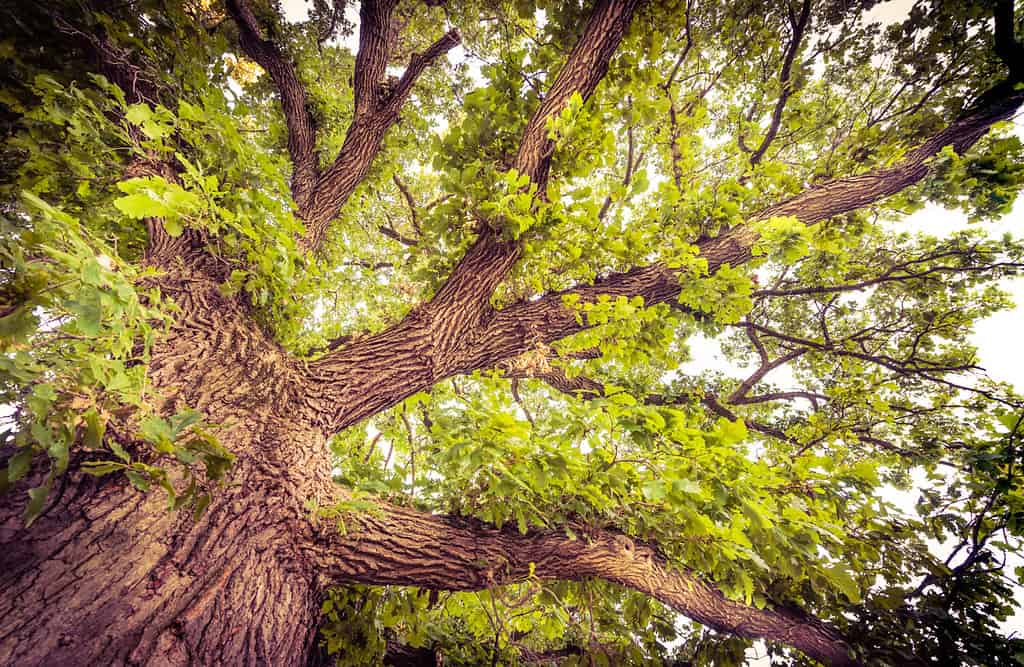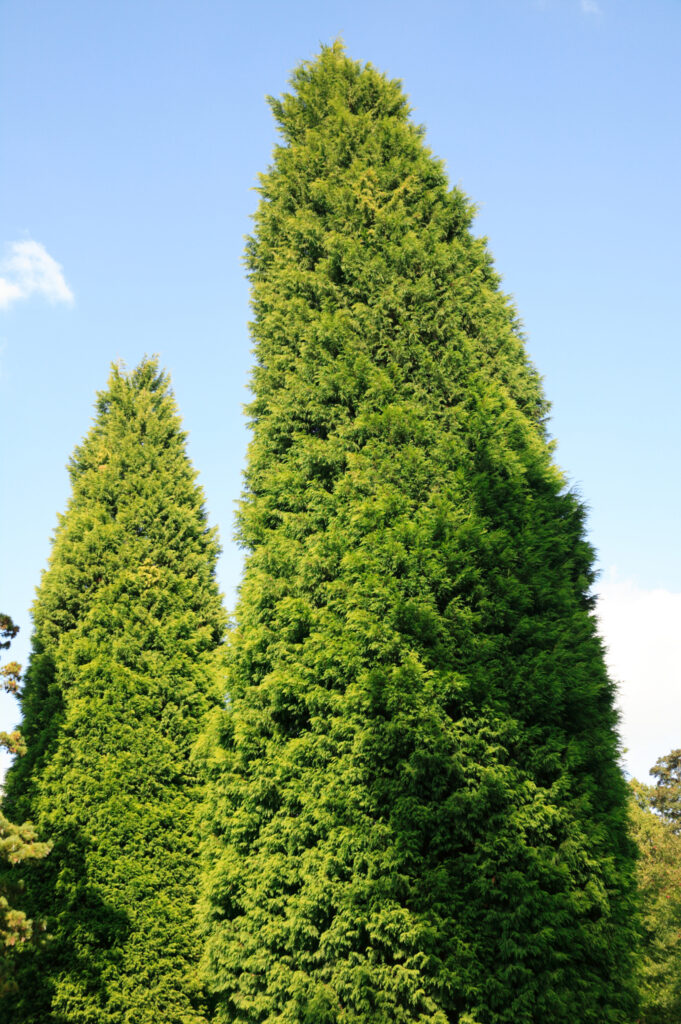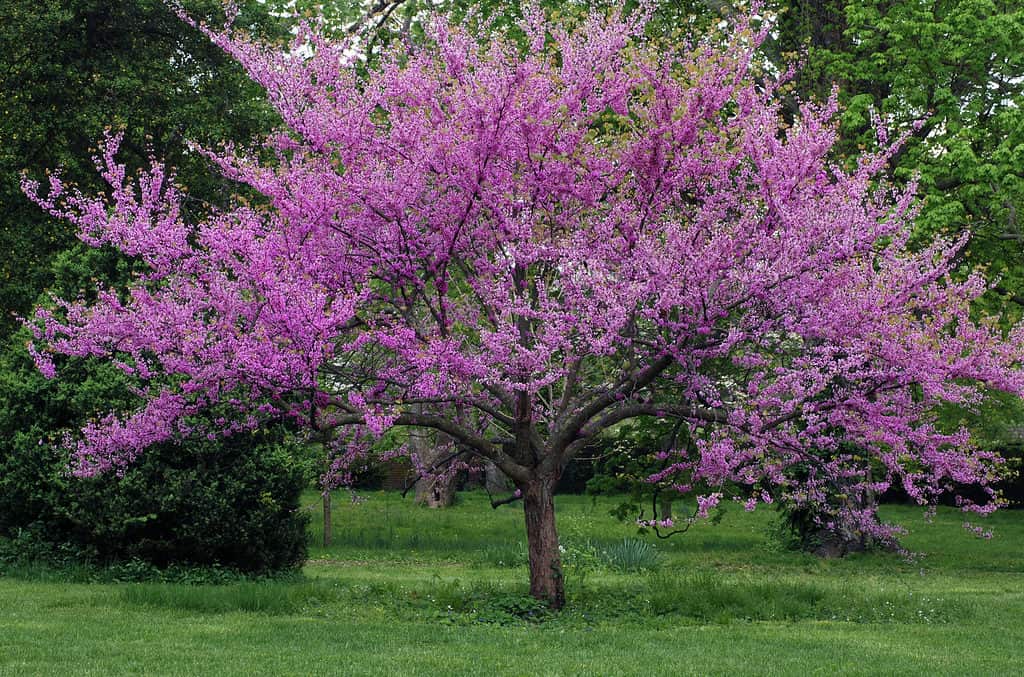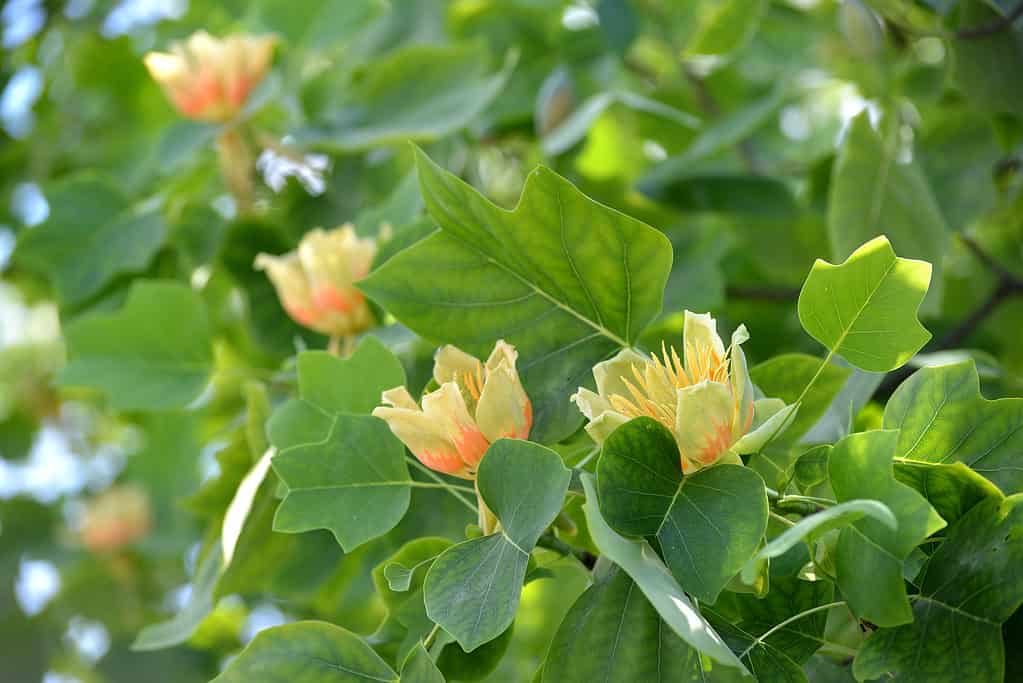Nature is full of beautiful and diverse plant life. In the springtime especially, blooming landscapes will surely captivate any nature lover’s eyes and nose. For the Michigander, many blossoming tree species will catch the eye, as well. This article will investigate 3 species of flowering trees in Michigan and discuss where they exist when they bloom, and what they look like. Here are 3 beautiful flowering trees in Michigan.
Background
Types of Trees
Trees come in a diverse array of types, each possessing unique characteristics and ecological significance. Broadly, trees can be categorized into deciduous and evergreen varieties. Deciduous trees shed their leaves during the fall, while evergreen trees maintain their foliage throughout the year.

The oak tree is an example of a deciduous tree.
©Steve Quinlan/Shutterstock.com
Deciduous trees encompass a wide range of species such as maples, oaks, birches, and elms. These trees offer spectacular displays of changing foliage in autumn, painting the landscape with vibrant shades of red, orange, and yellow. Deciduous trees play a crucial role in temperate regions by providing shelter and food for various wildlife. They also contribute to soil fertility through leaf litter decomposition.

Evergreen trees, unlike deciduous trees, maintain their foliage throughout all seasons.
©iStock.com/TonyBaggett
On the other hand, evergreen trees maintain their lush green foliage all year long, making them especially vital in colder climates where their needle-like or scale-like leaves enable them to conserve water during winter. Iconic evergreen trees include pine, spruce, fir, and cedar. These trees often serve as windbreaks, providing a protective barrier against harsh winds and snow in northern regions.
Flowering Trees

The cherry blossom is one famous example of flowering tree that can be found in many different states, including Michigan.
©iStock.com/valerie
A noteworthy subset of trees are flowering trees. These species boast showy blossoms, adding splashes of color and beauty to the landscape during specific times of the year. Flowering trees not only enhance the aesthetics of the environment but also contribute to pollinator habitats and play essential roles in ecological interactions. They are an essential nutrient source for various herbivores, frugivores, and insectivores. Such species include bees, butterflies, hummingbirds, bats, small mammals, and more.
1. Flowering Dogwood

The flowering dogwood has many common names such as Indian arrowwood, white cornel, and false box.
©iStock.com/JillLang
Flowering dogwood (Cornus florida) is a captivating native tree that graces the landscape of Michigan with its delicate blossoms. It grows throughout the state in woodlands, forests, and along the edges of streams and rivers. Flowering dogwood thrives in a variety of soil types, particularly favoring well-drained, acidic, and moist conditions, making it a common sight in both natural and cultivated settings.
The flowers of the Michigan flowering dogwood are truly a sight to behold. Appearing in early spring, typically from late April to early May, they transform the tree into a picturesque scene of elegance and charm. The flowers are about 2 to 3 inches in diameter, and have four showy bracts surrounding a cluster of tiny greenish-yellow florets at the center. These bracts, which are actually modified leaves, can range in color from pristine white to soft pink. They create a stunning contrast against the tree’s dark, textured bark.
Throughout the growing season, the tree continues to impress with its lustrous green foliage, turning a striking burgundy hue in the fall. In addition, the tree’s red berries attract various wildlife, including birds, squirrels, and deer, adding to its appeal as a natural ornament in Michigan’s landscapes. From its eye-catching blossoms to its vibrant autumn display, the flowering dogwood undoubtedly remains a treasured symbol of beauty and resilience in the Great Lakes state.
2. Eastern Redbud

Eastern redbud trees grow beautiful lavender-pink flowers and heart-shaped leaves.
©Marie C Fields/Shutterstock.com
The eastern redbud (Cercis canadensis) is a captivating small deciduous tree that adds to Michigan’s beauty with its vibrant blooms and ornamental appeal. It can be found across various regions of the state, including urban parks, suburban landscapes, and woodland edges, where it thrives in well-drained soils with adequate sunlight.
The eastern redbud is celebrated for its enchanting flowers, which burst forth in early spring, usually around April. Even before its heart-shaped leaves emerge, clusters of pink to purplish-pink blossoms appear all over the tree’s bare branches. These blossoms are not only stunning but also provide an essential source of early-season nectar for bees, butterflies, and other pollinators.
As the tree enters its summer phase, its lush green foliage emerges, forming a dense and attractive canopy. In the fall, the leaves take on brilliant shades of yellow and gold. This adds a final touch of beauty before winter arrives. Finally, the eastern redbud produces flattened, dark brown pods that remain on the tree through the winter months, providing food for various wildlife species.
3. Tulip Tree

Tulip trees are less common in Michigan than flowering dogwood or eastern redbud trees but have incredibly beautiful and unique blossoms.
©Irina Borsuchenko/Shutterstock.com
The tulip tree, also known as yellow poplar or Liriodendron tulipifera, is an impressive native tree that can be found in select regions of Michigan. It primarily thrives in the southern and southwestern parts of the state, favoring well-drained and moist soils along riverbanks, floodplains, and rich, upland forests.
The blossoms of the tulip tree are a sight to behold. Flowering typically occurs in late spring to early summer, usually in May or June. The flowers are quite unique, resembling tulips, with a vibrant mix of yellow and green hues. The blooms are high up in the canopy, making them a delightful sight from a distance. They also produce nectar, attracting various pollinators like bees and butterflies.
Beyond its eye-catching flowers, the tulip tree boasts striking characteristics throughout the year. Its leaves distinctly resemble tulip flowers, which is how the tree earned its common name. During autumn, the leaves turn a magnificent golden-yellow, adding a touch of brilliance to the Michigan landscape. Also, the tree’s straight and tall trunk, often towering over 100 feet, contributes to its allure as a magnificent specimen in both natural and cultivated settings. Though relatively less common in Michigan compared to other species, the tulip tree remains an impressive and majestic presence.
The photo featured at the top of this post is © iStock.com/Jim Still-Pepper
Thank you for reading! Have some feedback for us? Contact the AZ Animals editorial team.






